Now in the crypto circle:
Suitable for:
Sincerely want to turn around, be patient, and don't fantasize about getting rich overnight.
Can execute, have execution, don't have a glass heart, don't procrastinate
Willing to be a blank slate, believe in me, and don't mess with the account.
Not suitable for:
Wanting to rely on luck, fantasizing about getting rich, chasing ups and downs, and being impulsive.
Just wanting to freeload without doing anything
In this market now, a bunch of people are爆仓, a bunch of people are being harvested, and a bunch of people have lost tens of millions but don't know where they went wrong.
I靠 this trick, in one year, from 800U to more than 1 million U! Don't look at K-lines, don't watch the market, don't copy the bottom - but you can withdraw money every month!
This article is only dedicated to: those who have lost badly, are eager to make a comeback, but have no direction
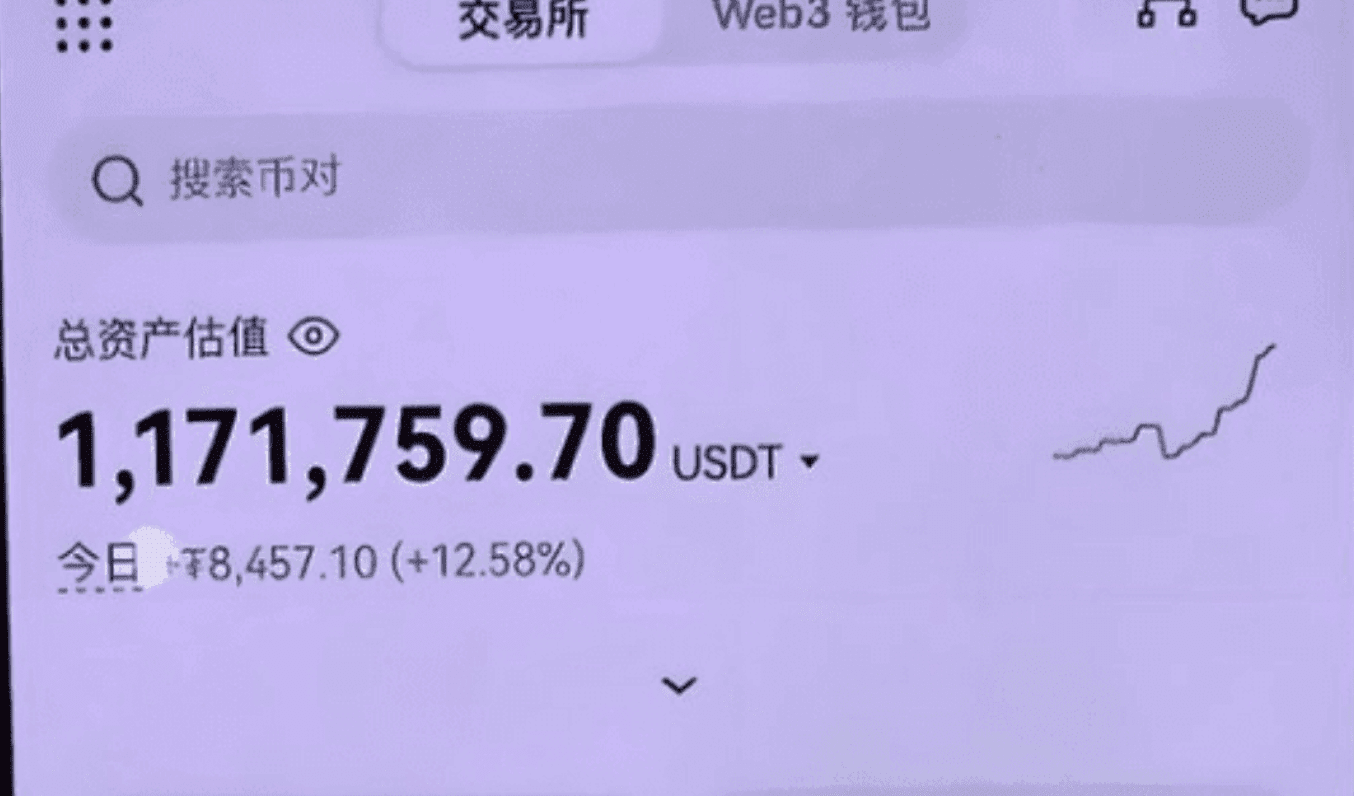
After mixing in the crypto circle for 7-8 years, to tell you the truth, the people who really make money are never those with good technology, but those with the right rules, accurate rhythm, and stable emotions.
You may only have 3000U, 1000U, or even less than 500U left in your account. Don't worry, I have saved too many people who were about to be liquidated. The last trick is to reverse the situation. I don't teach magic, but the law of survival.
[I only rely on one method: insensitive liquidation method]
The core logic of the insensitive trading method:
Only trade coins with strong logic and strong trends (BTC, ETH, SOL, bnb...)
Only make one trade at a time, and come back after it explodes, but not blindly, but with a spiral rolling position method and position control.
Don't look at K-lines, don't study RSI, MACD, FIB, just look at "trend direction + large order sentiment."
Do you believe it? I haven't looked at a single K-line in half a year, but I have helped 27 newbies翻了账户 by more than 3 times!
Practical case:
Account starting amount: 800U
First time: ETH long, 3x leverage ate 42 points, profit 412U
Second time: SOL long, 5x leverage ate the 3-day wave, +2150U
Third time: BTC short, full position 20x leverage,爆赚16000U
[Why do you always lose when you trade coins?]
I summarized 3 typical ways that leeks die
Chasing hot spots, chasing highs, listening to calls, and looking for reasons after being liquidated.
Watching the market every day, emotional ups and downs, doubting life after losing one order
Unclear direction, position control depends on feeling, no concept of stop loss and take profit
To be honest, it's not that you don't work hard, it's that you are going in the wrong direction. If the method is wrong, no matter how hard you work, it's a dead cycle
Stop relying on luck, this set of 10x rolling position formula has doubled the accounts of multiple fans
Many fans asked me how this was done, and some fans even wanted me to bring orders or something
Give a man a fish and you feed him for a day; teach a man to fish and you feed him for a lifetime. I am only responsible for teaching skills, and the rest depends on your comprehension.
This method does not depend on luck, but has a set of practical models
First, the golden rule of selecting coins: don't die in the step of selecting coins
Many people have already lost when trading, dying in the step of selecting coins.
So how do you pick a coin that can explode 10 times?
Weekly EMA21 and EMA55 golden cross and then回调: For example, LDO broke through 0.8 in 2023, a typical bull market breakout signal
Volume 放大: 2.3 times the volume of the Bollinger Band mid-rail, this data is the foundation of the outbreak. We have a special volume monitoring script that can automatically filter out those false breakouts
Large support order acceptance: At the key support level, you must see at least 3 large order purchases. This step determines the explosive power of this wave of market.
Second, rolling position strategy: how to疊加 funds, both safe and violent
First open position: First use 17% of the principal and control the position of each entry.
Position increase rhythm: When the floating profit is 25%, increase the position to 34%; when the coin releases volume for the second time, continue to increase the position to 68%
During the final冲顶, increase the position to 112% with leverage, but follow the principle of decreasing leverage to avoid liquidation at a high position
Third, risk control and防爆仓: Systematized operation, stay away from gambling luck
Dynamic take profit: Each time a new high is reached, reduce the position by 6.8% to protect profits. This rule is constantly adjusted and improved in the 312 real trading
Leverage adjustment: Automatically reduce the leverage by 5% every 8 hours to prevent a sharp drop at a high position.
Black swan mechanism: Once the USDT premium exceeds 2.7%, the system will automatically liquidate the position to avoid risk and ensure safety.
Fourth, the most underestimated part: the emotional system
High-risk period: 3-5 am is a period when the dealer often "fires cold guns", so be especially vigilant
Focus enhancement: Before each trade, take 10 minutes of deep breaths to improve decision clarity
Cooling-off period: When the profit exceeds 50%, a 48-hour cooling-off period is forcibly entered to avoid making wrong decisions due to excessive profits
This system is not metaphysics, it does not depend on luck, but on discipline, data, execution, and a stable compound interest system.
The real doubling is not靠一次 or twice暴击, but rely on stable长期复利
Earning 1 million in the crypto circle "either relies on a big bull market + holding on, or betting on a coin that makes a fortune, or gambling on the right direction with high leverage." But most people lose money, so don't just look at get-rich-quick stories, first figure out how much risk you can bear.
If you are also a technical expert in the crypto circle, click on the coin homepage.
Click on the avatar to follow me and get first-hand information and in-depth analysis!
200-day moving average ultimate guide: Professional traders teach you how to avoid being washed out and eat the entire big trend!
The most common mistake traders make is that they always expect to find a “trading holy grail” and ignore the learning and experience accumulation in actual trading. It is recommended that novice traders must establish a detailed plan. This plan should set some parameters for each transaction, such as which market conditions can be traded, how to enter and exit, and how to manage the transaction. If the transaction is always losing money, you must reflect on your trading plan in time and continue to improve it. The 200-day moving average is one of the most watched indicators.
As long as you open the financial news, you will always hear similar arguments:
"The S&P 500 index fell below the 200-day moving average - a bear market is coming!"
"You should buy when the price breaks through the 200-day moving average."
"Apple's stock price closed below the 200-day moving average - it's time to sell."
But the question is: what practical help does this actually provide to traders?
Of no help.
On the contrary, it will only play with your emotions, inducing you to buy and sell at the wrong time.
But don't worry, we will completely change this situation.
What is the 200-day moving average? How does it work?
A moving average (MA) is a trading indicator formed by averaging price data, displayed as a curve on the chart.
Its operating principle is as follows...
Assume that the closing prices of Apple's stock for the most recent 5 trading days are $100, $90, $95, $105, and $100, respectively.
Then the 5-period moving average is calculated as: [100 + 90 + 95 + 105 + 100] / 5 = 98
When you continuously mark these 5-period moving averages on the chart, a smooth curve is formed.
The principle of the 200-day moving average is exactly the same, the only difference is that it statistically analyzes the price data of the most recent 200 trading days, thus forming a longer-term moving average.
(Take TradingView as an example) The method to set the 200-day moving average is as follows:
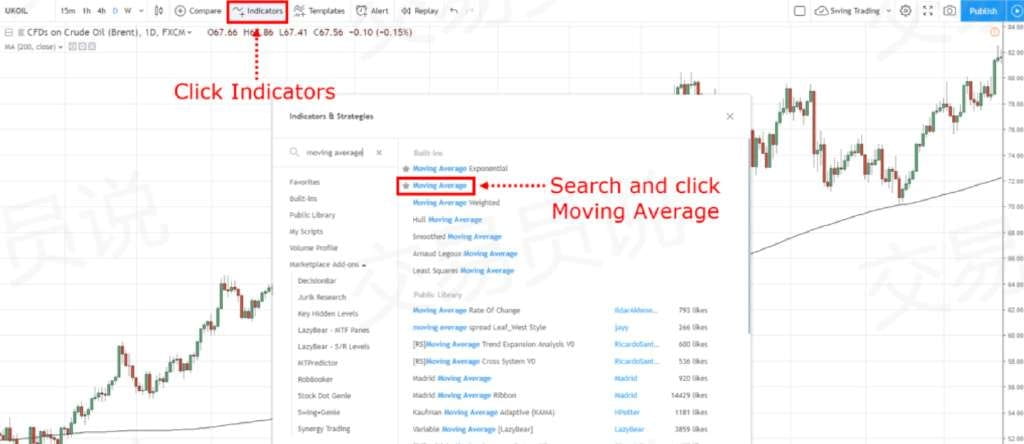
Here is a graphical example of the 200-day moving average:
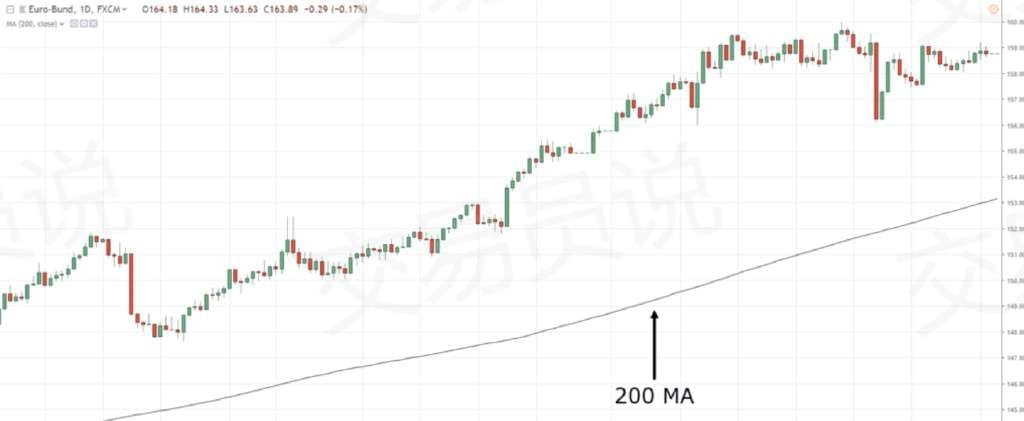
It should be noted that there are many types of moving averages, such as exponential moving average (EMA), simple moving average (SMA), weighted moving average (WMA), etc.
But you don't need to worry about these types, because their core principles are the same (only the calculation methods are slightly different).
Next we will enter the main topic...
How to use the 200-day moving average to improve the winning rate of trading?
The key lies in:
The 200-day moving average is a long-term trend indicator.
This means that you can use it to identify and trade with the long-term trend.
The specific method is as follows:
◎ When the price is above the 200-day moving average, give priority to finding buying opportunities;
◎ When the price is below the 200-day moving average, consider selling opportunities.
An example is shown in the figure below:
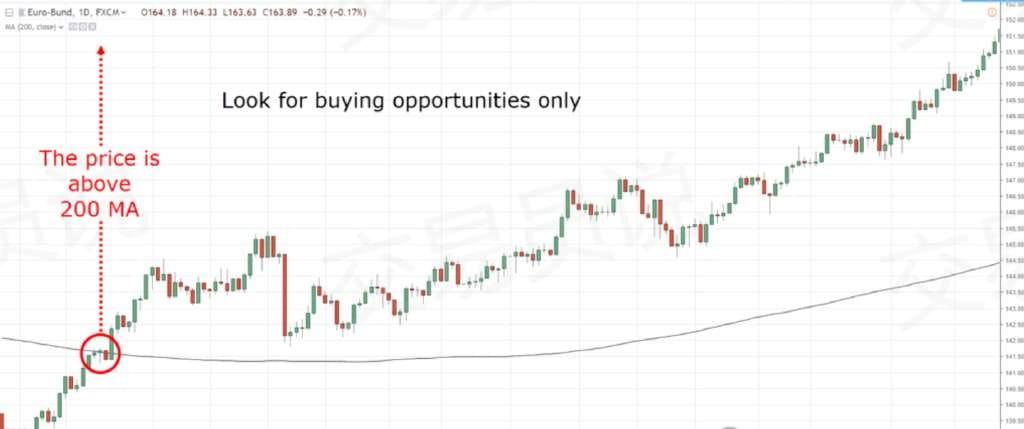
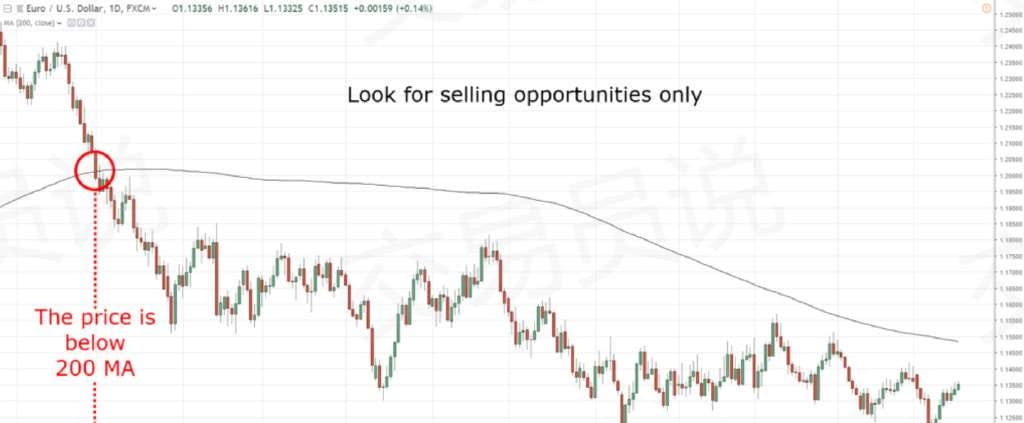
Professional advice: If you are trading stocks or spot goods in the crypto circle, you can refer to the market index or BTC to judge the trend direction.
For example: When the S&P 500 index is above the 200-day moving average, give priority to finding buying opportunities for US stocks.
This simple 200-day moving average trading strategy can both improve the winning rate and reduce capital retracement.
How to accurately grasp the buying and selling opportunities by combining the 200-day moving average?
You may ask:
"It's not difficult to judge the trend using the 200-day moving average, but when is the best time to enter the market?"
Here are some practical tips:
◎ Support and resistance levels
◎ 200-day moving average rebound
◎ Ascending triangle
◎ Bull flag
The specific analysis is as follows...
1. Support and resistance levels
◎ Support level: A key area on the chart that may trigger buying pressure
◎ Resistance level: A key area on the chart that may trigger selling pressure
Operation logic:
When the price is higher than the 200-day moving average, look for buying opportunities at the support level;
When the price is lower than the 200-day moving average, look for selling opportunities at the resistance level.
As shown in the figure below:
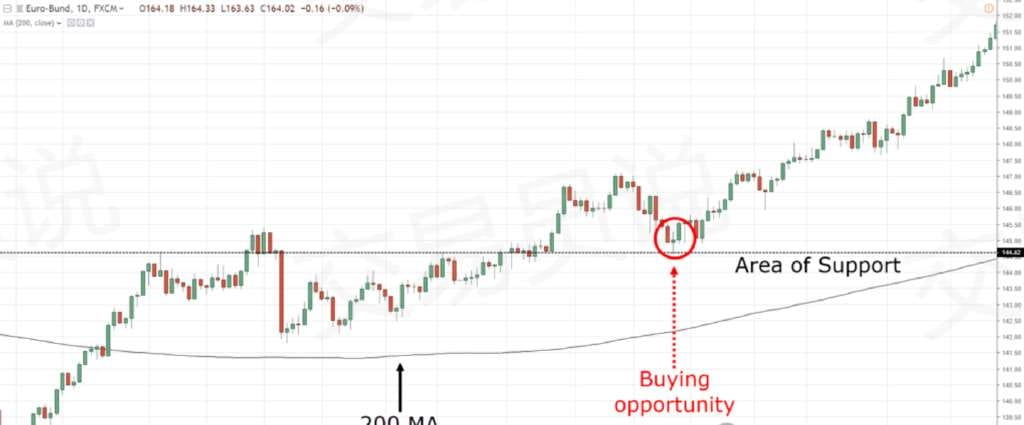
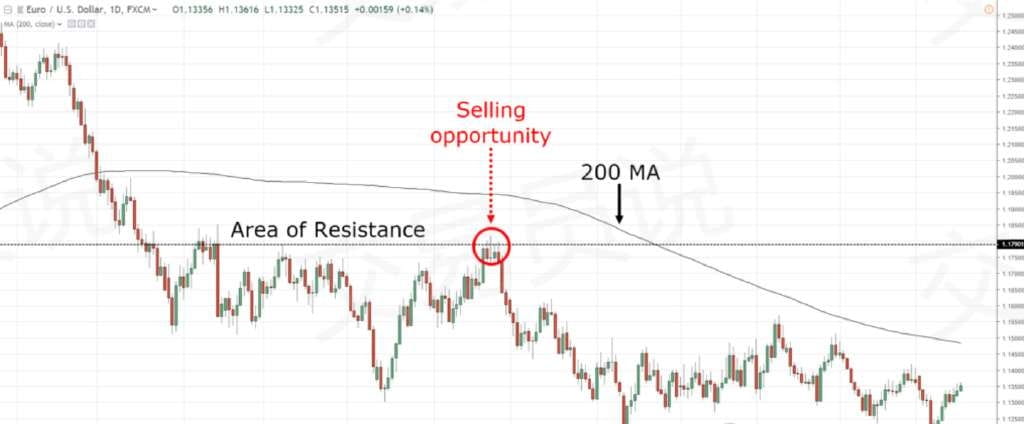
2. 200-day moving average rebound strategy
When the trend is weak, the 200-day moving average can often form a value area.
When the price "rebounds" after approaching the 200-day moving average, it often indicates an excellent entry opportunity. As shown in the figure below:
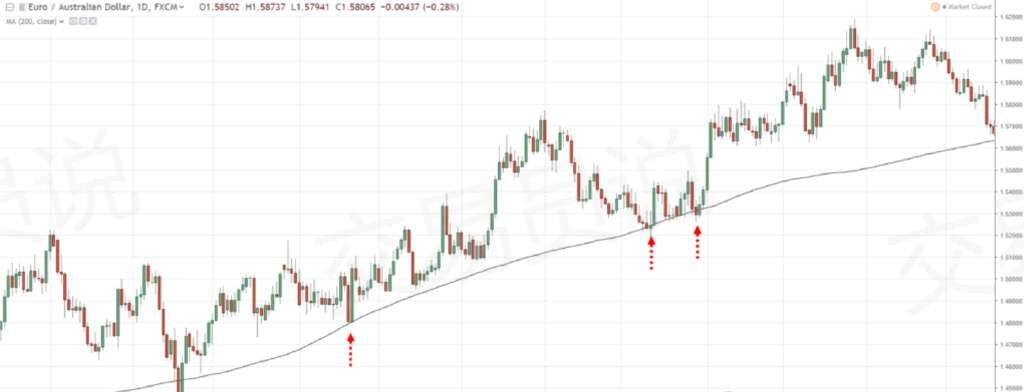
Professional advice: When the 200-day moving average coincides with nearby support/resistance levels, the winning rate of the trade will be significantly improved.
3. Ascending and descending triangles
The ascending triangle is a bullish pattern, which is characterized by: despite encountering resistance, buyers are still willing to take over at higher prices, showing market strength.
Operation guide:
When the price is above the 200-day moving average (uptrend), you can look for an ascending triangle breakout to go long;
When the price is below the 200-day moving average (downtrend), pay attention to the descending triangle breakout to go short.
An example is shown in the figure below:

Professional tip: The longer the ascending triangle forms above the 200-day moving average, the stronger the subsequent breakout will be.
4. Bullish flag
A bullish flag is another bullish chart pattern.
This is a sign of price strength, because the多头 are in control and the空头 are struggling to push the price down (which is why you have small candlesticks on pullbacks).
Therefore, in an uptrend, you can look for bullish flag patterns and buy at the high point breakout.
In a downtrend, look for bearish flag patterns and go short on low point breakouts.
As shown in the figure:
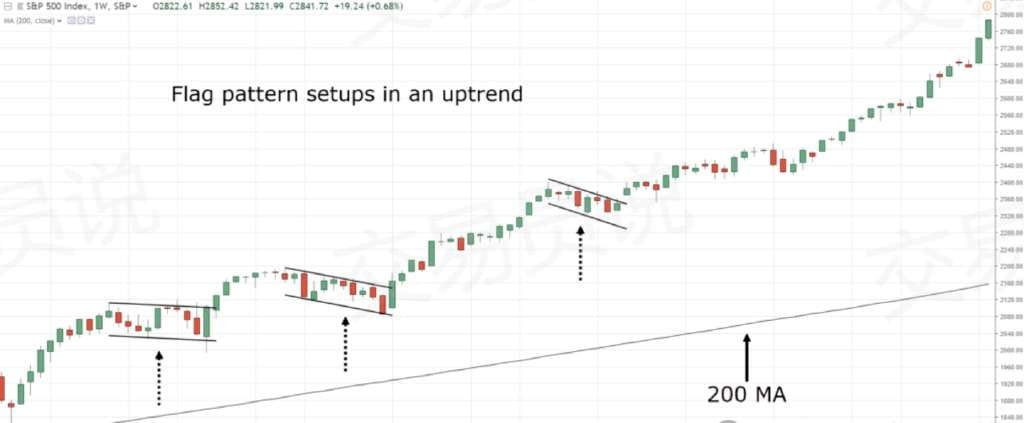
Professional Tip: The best flag trading opportunities usually occur on the first pullback after the price first breaks out of the consolidation range.
How to use the 200-day moving average to capture big trends and avoid being shaken out in pullbacks?
If you want to ride the huge trends in the market (trends that other traders covet), then you must let your trading space "breathe".
We shouldn't cancel tight trailing stop losses. Instead, you have to give it a buffer zone.
One method is to use the 200-day moving average to track the stop loss. This means that if you go long, you will only exit the trade when the price closes below the 200-day moving average.
Or, if you short, exit the trade only when the price closes above the 200-day moving average.
As shown in the figure:
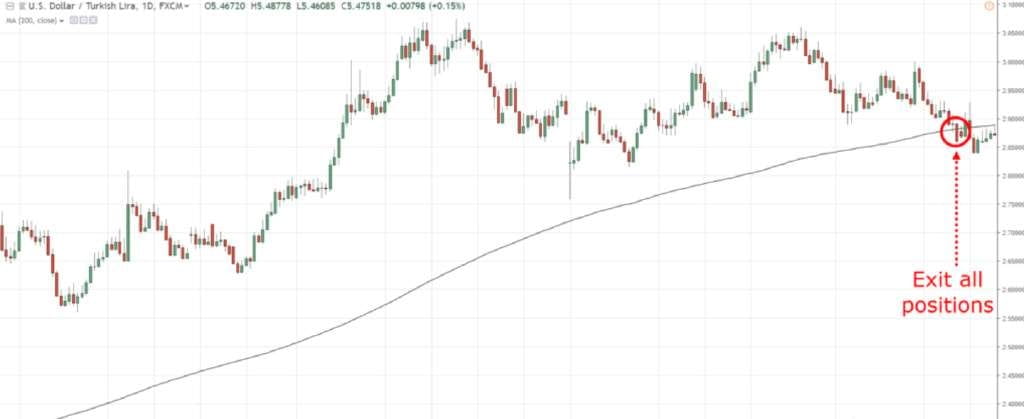
Professional Tip: If you want to control the short-term trend, you can follow the 20-day moving average; if you want to control the medium-term trend, you can follow the 50-day moving average.
How to accurately identify the market cycle and avoid operating against the trend?
The market is always in dynamic change, cyclically converting between consolidation → trend → consolidation.
You can break the market down into 4 stages:
1. Accumulation Phase
2. Advancing Stage
3. Distribution Phase
4. Declining Phase
(This is important, so please learn it)
1. Accumulation phase
The accumulation phase usually occurs after a downtrend.
At this time, the market presents a range震荡 form, with obvious support and resistance levels.
You will observe that the 200-day moving average gradually flattens out, and the price震荡 repeatedly in its vicinity (commonly known as the "whip sweep" phenomenon).
This indicates that the forces of buyers and sellers have reached equilibrium, and the market is in a period of direction selection.
As shown in the figure below:
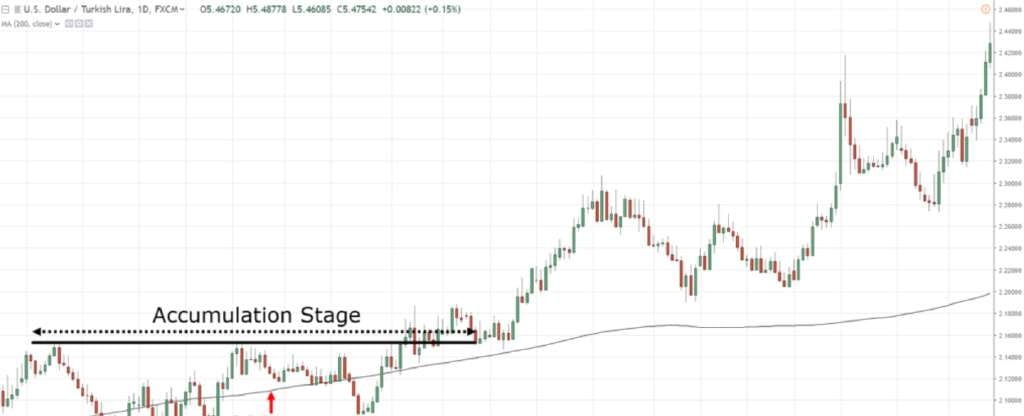
This means...
During this stage, the 200-day moving average strategy may fail. The market may break upwards or downwards: If it breaks downwards, the downtrend continues (you can look for shorting opportunities); if it breaks upwards, it marks the beginning of an uptrend, entering the next stage...
2. Uptrend Phase
When the price breaks through the upper edge of the accumulation range, the market enters the uptrend phase. It is manifested as an uptrend with constantly moving higher highs and higher lows, the price stands firmly above the 200-day moving average, and the 200-day moving average begins to turn upwards.
See the example below:
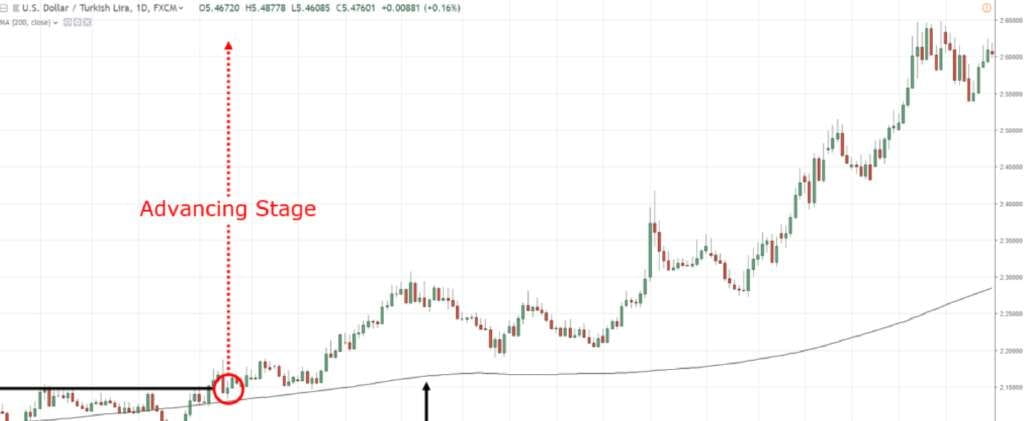
In the uptrend phase, the path of least resistance is upward, so you want to be a buyer (not a seller).
There are several ways to trade rising:
◎ Seize the opportunity to buy on the first pullback after the accumulation phase breakout
◎ Wait for the price to retrace to the support level converted from the resistance level.
◎ Pay attention to buying opportunities when prices retrace near the moving average
3. Distribution Phase
The market will not always rise. When selling pressure begins to suppress prices, it will first enter the distribution phase. It is manifested as range震荡 in the uptrend, and the 200-day moving average flattens out again, and the price震荡 around the moving average, showing that the market has entered a 多空 equilibrium state again.
Here's an example:

At this time, the market may break upwards or downwards: If it breaks upwards, the trend continues; if it breaks downwards, it means the beginning of a downtrend...
4. Downtrend phase
This is the final stage of the market cycle. When the price falls below the lower edge of the distribution range, it enters the downtrend phase, presenting a downtrend with constantly moving lower lows and lower highs. At this time, the price runs below the 200-day moving average, and the moving average begins to slope downwards.
See the example below:
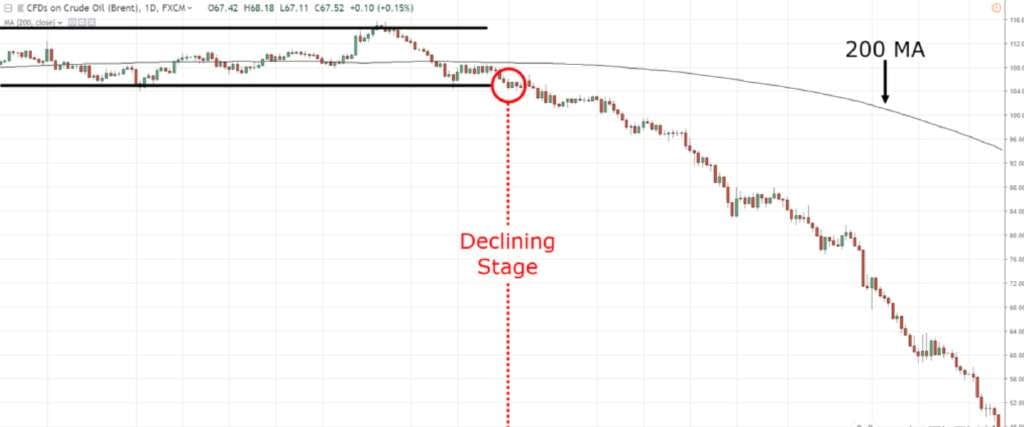
In the downtrend phase, the path of least resistance is downward, so you want to be a seller (not a buyer).
Similarly:
The downtrend will not last forever. When the price is low enough, it will attract buying pressure, and the market will return to the first stage - the accumulation phase, completing the cycle.
The four stages of the market are more like art than science.
Sometimes it is not clear which stage the market is in.
When this happens, your best bet is to move to another more meaningful market.

The crypto circle only recognizes two types of winners
What ordinary people should learn is the "stupid way to defeat talent with rules"
After each round of bull and bear market, there are always people who earn a lot, and there are always people who lose so much that they doubt life.
But if you observe carefully, you will find that there are only two types of people who can really make money in the long run.
What ordinary people should learn is never the炫技 of "talent type", but the守拙 of "principle type".
First, see the reality clearly: 99% of people can't learn to be gifted winners.
Gifted traders are like "The Flash" in the market: they can stare at 1-minute K-lines at 3 AM to capture hot narratives, accurately pick out the "true logic" from a pile of good news, be decisive in short-term pullbacks, and immediately withdraw after a profitable ambush. But these people have three "fatal thresholds" that ordinary people simply cannot cross:
Extreme talent: Sensitivity to market sentiment and insight into capital flows are innate "market senses," just like some people are born with good math, and you can't catch up even if you stay up late to do problems;
Full dedication: They can continuously study the market for 12 hours a day for half a year, tearing apart the white papers of each coin, and engraving the funding rate and long-short ratio data in their minds. Ordinary people have to work and live, and simply don't have this time;
Stress resistance: During short-term fluctuations, they can calmly add positions when losing 20% and decisively take profits when making 50%. This "anti-human mentality" cannot be achieved by 99% of people even after ten years of practice.
So don't envy them - the money of talented winners is exchanged for "God-given talent + desperate hard work." Ordinary people will only become "imitators" if they study hard, chasing ups and downs and losing even more miserably.
What ordinary people should learn is the "principled winner": use rules to turn "stupid methods" into "stable profit logic"
Principled traders look "very boring": they don't chase hot spots, don't show off operations, and rarely even watch the market, but their accounts can always grow steadily. The core is not talent, but engraving "anti-human rules" into the bones, which is exactly the path that ordinary people can replicate.
The core of the principle type: use the "four no principles" to filter out 80% of the pitfalls
Don't do targets that you don't understand: They only stare at the 5-10 coins they have thoroughly researched (such as BTC, ETH, or familiar track leaders). They don't care about "new concept coins" or "hot spot coins" that they don't understand, even if they rise to the sky. When the AI concept was popular last year, some people chased up unknown AI coins and lost 50%, while principled traders only bought the head coins in the "AI+L2" track and steadily earned 30%.
Don't be led by emotions: Don't be greedy to "take it again" when it rises, and don't panic to "cut it quickly" when it falls. Everything depends on the rules. For example, set "reduce half of the position when the profit is 20%, and stop loss unconditionally when the loss is 5%." No matter how exciting the market is, just press the button to execute. Ordinary retail investors lose because they "want more when it rises, and hope for a rebound when it falls," while the principle type locks the emotions with rules.
Don't move too much, be patient: They spend 80% of their time waiting and 20% of their time operating. During a bear market, the position is pressed to below 30%, or even watching the show with an empty position; during a bull market, they only enter the market after the "trend is confirmed" (such as standing on the 60-day line, the volume is放大), and never "guess the bottom and copy the top". Ordinary people want to "seize the opportunity" every day, resulting in being repeatedly harvested in the震荡, and 40 of the 50 transactions in a year are invalid operations.
Don't be greedy for quick money, earn slow money: they don't pursue "doubling in a week," but only do compound interest of "10%-20% per month." With a fixed position (no more than 10% per trade) and reasonable stop-loss (2%-3% loss each time), even if they are wrong 5 times in a row, the principal only retraces 10%, and catching a trend that earns 30% can cover all losses. Ordinary retail investors always think about "making back the capital in one go," heavily leveraging and shorting for quick money, resulting in a zero balance after one liquidation.
The biggest pitfall for ordinary retail investors: treating "emotional stocks" as opportunities and "principles" as nonsense.
Are you also like this?
Seeing someone in the group shouting "100x coin starts," they rush in with a hot head, and don't even know what the project is about;
If the coin price drops by 5%, comfort yourself by saying "it's just a pullback," but only cut the meat when it drops by 20%, becoming more and more panicked as you lose more;
They finally made 10%, but feel "too little", and stubbornly resist until the profit is returned, and even loses money in reverse, and finally scolds "the market is targeting me".
These are typical manifestations of "emotion-driven trading." The power of principled traders is to use rules to kick "emotions" out of trading: be able to endure when you should wait, dare to take action when you should buy, and don't hesitate when you should sell.
Remember these 8 characters, ordinary people can also become "principle type winners"
Understand trade-offs: only do opportunities that you can understand. Among 100 hot spots, you may only be able to understand 3. Grasp these 3 is enough;
Avoid emotional stocks: Stay away from coins that "suddenly rise sharply, have no logic, and rely on calling orders to pull the market." These are emotional炒作, and they rise quickly and fall faster;
Winning steadily: Use position control (no more than 10% per trade) and stop-loss rules (run when you lose 5%) to protect the principal. Only by staying alive can you have a chance;
Slow is fast: Don't pursue "getting rich overnight". Earning 10% per month can triple the principal in a year. This is 100 times more reliable than "doubling in one gamble".
Finally, I want to say: the market does not reward "smartness," but rewards "clarity."
Gifted winners rely on God-given talent, which ordinary people cannot learn; but principled winners rely on "following rules, controlling emotions, and being patient," which are all trainable abilities.
The market will never run away, the only thing that can run away is your principal and out-of-control emotions. Instead of envying the "lightning operation" of the talent type, it is better to learn the "stupid way" of the principle type: understand trade-offs, avoid emotions, stabilize the rhythm, and earn slow money.
Remember: In the market, only those who live long are worthy of making big money. And the secret to living long is never talent, but the principles engraved in your bones.
Earning 1 million in the crypto circle "either relies on a big bull market + holding on, or betting on a coin that makes a fortune, or gambling on the right direction with high leverage." But most people lose money, so don't just look at get-rich-quick stories, first figure out how much risk you can bear.
If you are also a technical expert in the crypto circle, click on the coin homepage.
Click on the avatar to follow me and get first-hand information and in-depth analysis!